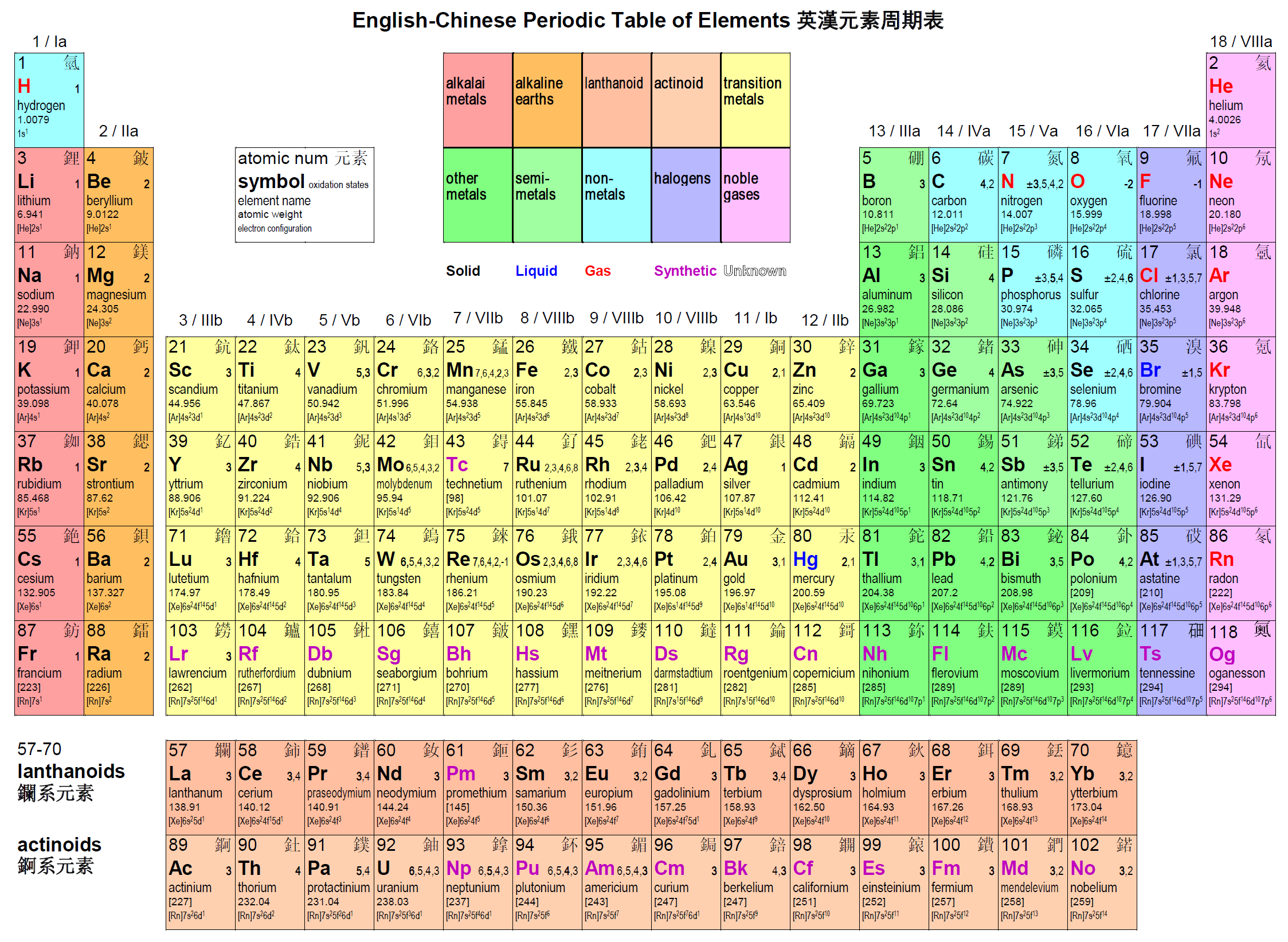So one would think there are fixed criteria for organizing the periodic table. But soon after I made my version available on the web, I discovered that other tables are not so consistent in several areas. In fact, even my reference materials don't agree on those points.
1. What is the official range of the lanthanide and actinide series? In particular, does it include lanthanum/lutetium and actinium/lawrencium? It seems like it does, but some tables put one of the start/end elements in the main table.
2. Which elements are in the other/poor metals?
3. Which elements are in the semi-metal/metalloids?
4. Are there two series with other metals/non-metals, or three with poor metals, semi-metals, and non-metals?
5. Does the halogens have their own series, or are lump together with non-metals?
6. Which series does hydrogen belong to?
7. Is it lanthanide/actine or lanthanoid/actinoid?
No wonder everyone wants to have their own version of the table to match what they believe is the correct classification! I'll update my table once I have these issues sorted out.
Sunday, October 16, 2005
Saturday, October 15, 2005
English Chinese Periodic Table of Elements 英漢元素周期表
I love reference material, and the periodic table of elements is one of my favorite charts. I like how it presents a dense amount of information in a small space and in an organized way. I especially like how the layout of the table also convey important information about the nature of the elements.
I am currently doing some personal studying in chemistry/physics areas, using primarily a Chinese text. What I wish I had was a periodic table with the standard information (atomic number, atomic weight, symbol, name) AND with Chinese names of the elements. I couldn't find something with all those parts on the net, so I created my own version. Here it is for all to share:
Color version of English/Chinese periodic table of elements (PDF 110K)

I hope other bilingual science enthusiasts will find it useful too!
I am currently doing some personal studying in chemistry/physics areas, using primarily a Chinese text. What I wish I had was a periodic table with the standard information (atomic number, atomic weight, symbol, name) AND with Chinese names of the elements. I couldn't find something with all those parts on the net, so I created my own version. Here it is for all to share:
Color version of English/Chinese periodic table of elements (PDF 110K)

I hope other bilingual science enthusiasts will find it useful too!
Subscribe to:
Comments (Atom)
